Abstract
In normal serum, saline dialysis for 48 hours in Visking casing resulted in folate clearance closely comparable to that produced by haemoglobin-coated charcoal adsorption, except in kwashiorkor where charcoal removed a greater proportion of folate. Pre- and post-dialysis values probably represented total and bound folate, respectively. Urinary folate consisted almost exclusively of dialyzable or free folate. Folate in saliva, bile, and erythrocytes consisted of dialyzable and non-dialyzable fractions; gastric juice contained minimal amounts of folate.
In spite of low serum albumin in kwashiorkor the bound folate fraction was increased rather than decreased; in myeloma with hyperglobulinaemia there was no increase in the bound folate fraction. Nephrotic urine did not contain excess folate, but pregnancy urine (third trimester) showed increased total folate.
Serum, chromatographed on Sephadex G-25, produced two folate peaks, only the first being associated with serum proteins. Urine contained only a second folate peak corresponding to the elution peak of pteroyl-monoglutamic acid (PGA). Adsorption studies with charcoal coated with `molecular sieves' of varying size suggested that the predominant serum folate binder was of molecular weight 70,000-120,000. It is unlikely to be albumin.
Full text
PDF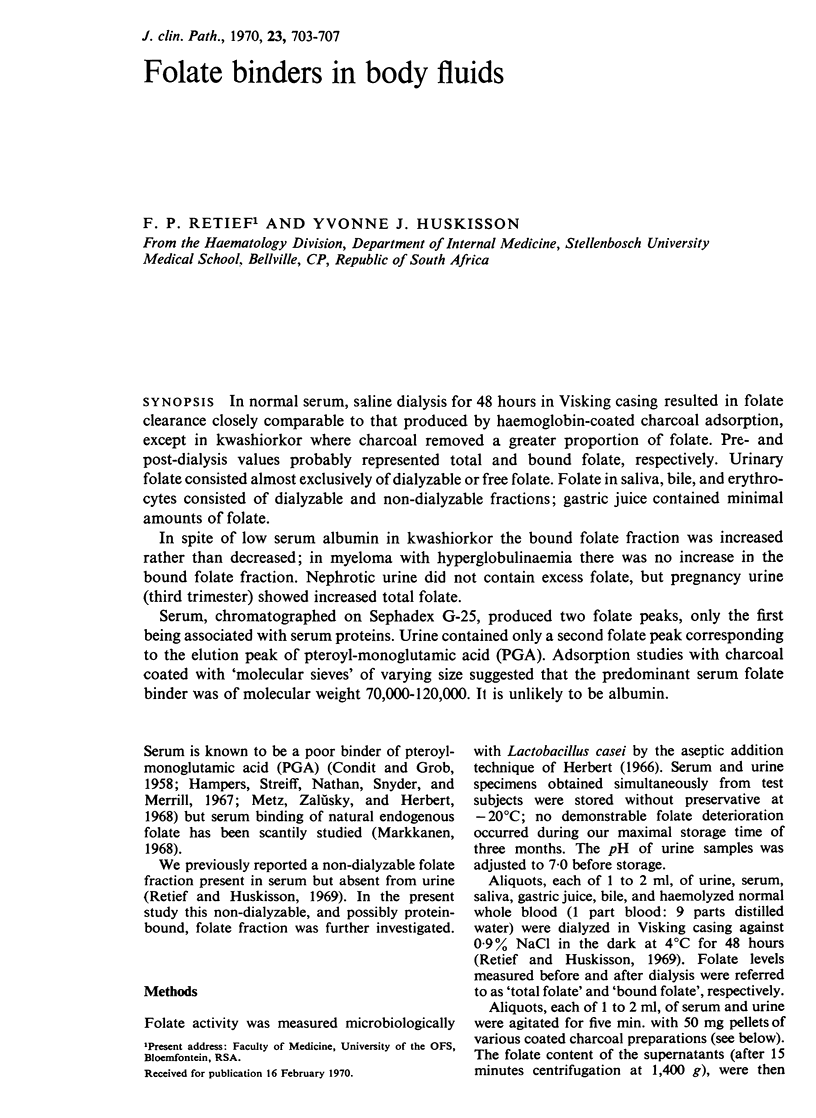
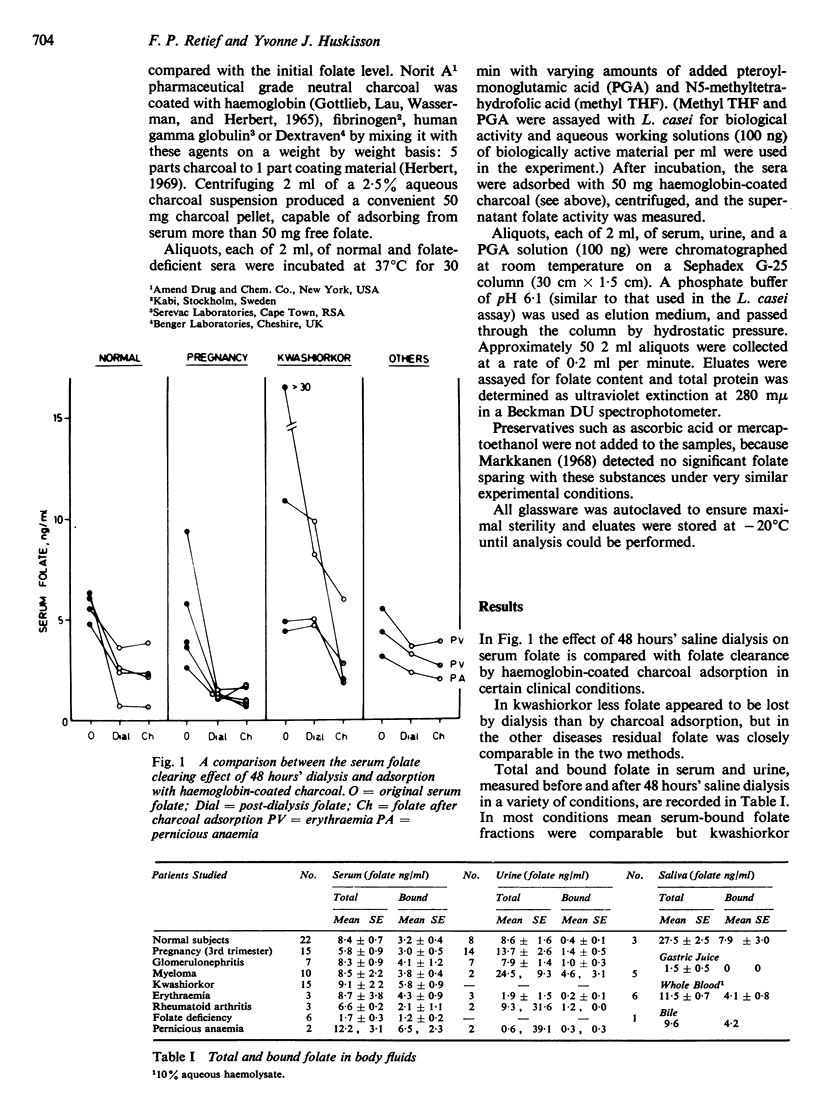
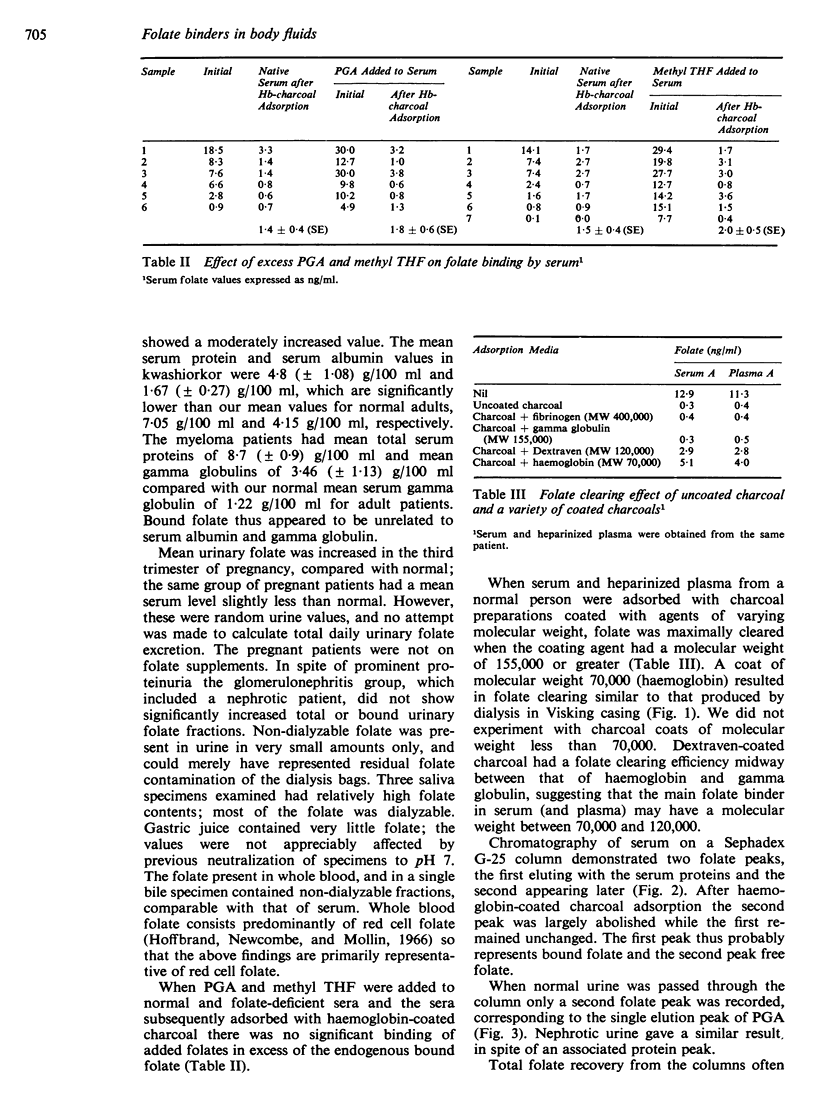
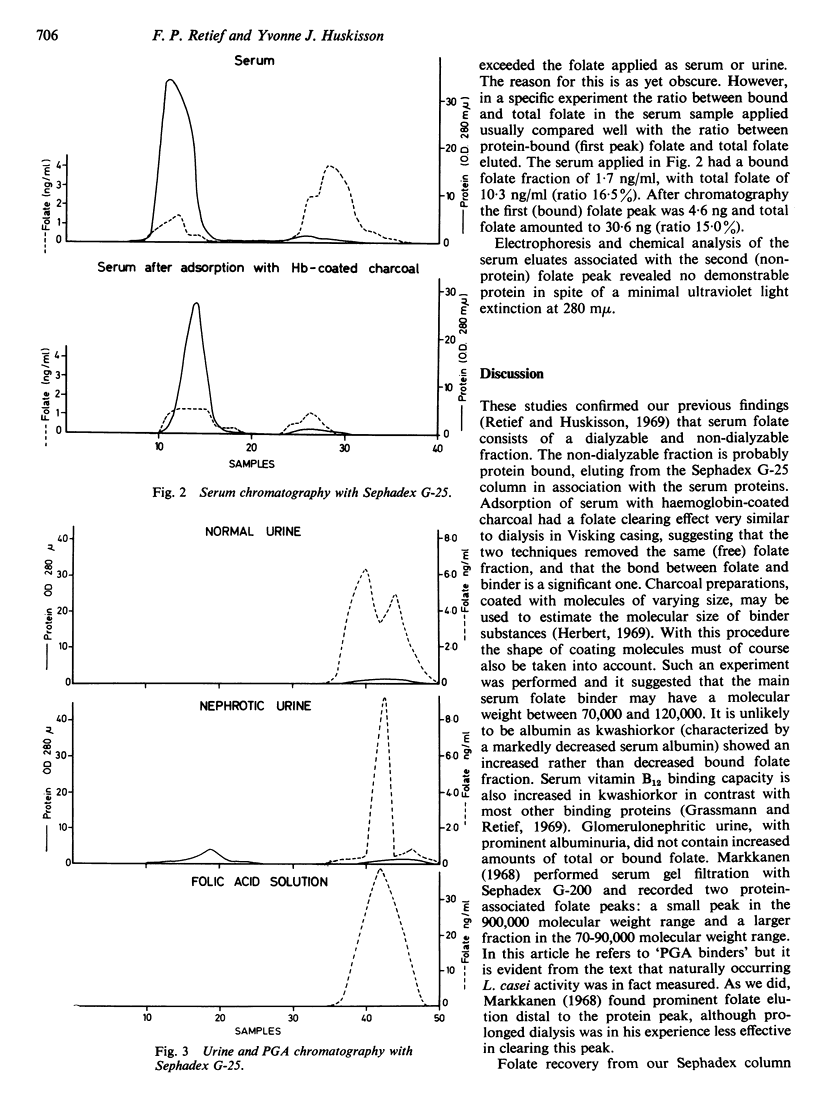
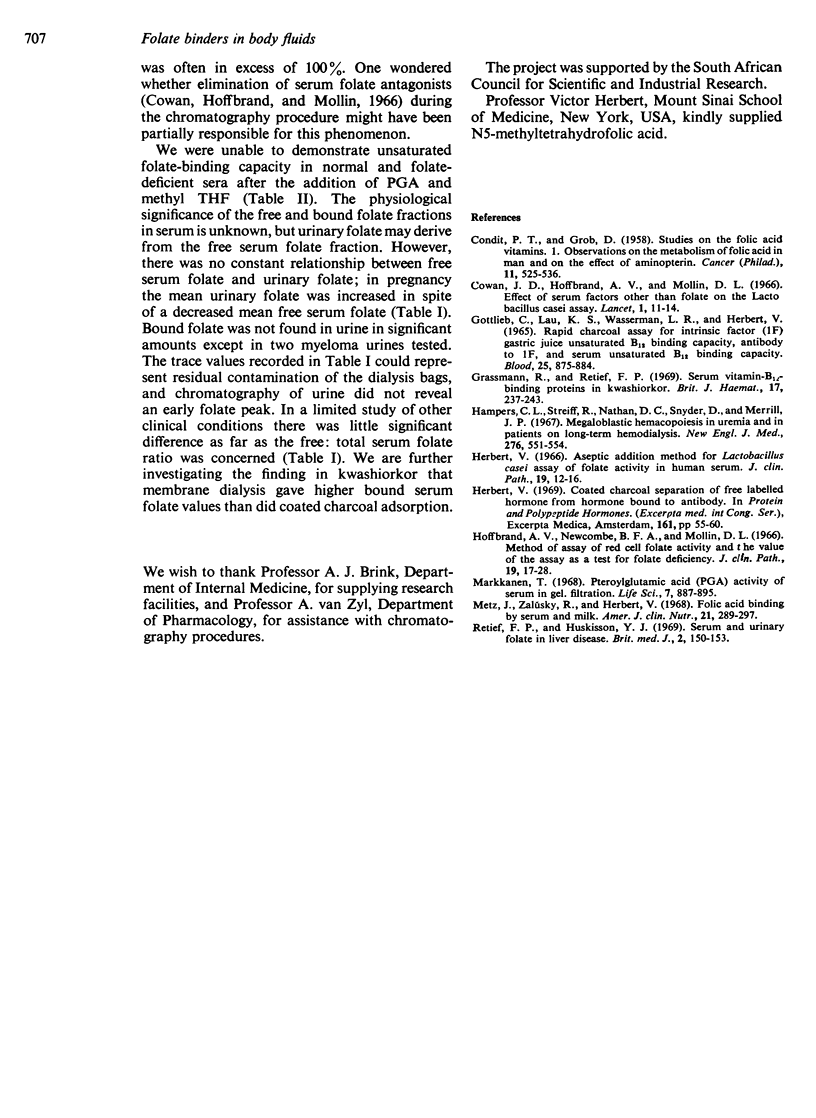
Selected References
These references are in PubMed. This may not be the complete list of references from this article.
- CONDIT P. T., GROB D. Studies on the folic acid vitamins. I. Observations on the metabolism of folic acid in man and on the effect of aminopterin. Cancer. 1958 May-Jun;11(3):525–536. doi: 10.1002/1097-0142(195805/06)11:3<525::aid-cncr2820110311>3.0.co;2-8. [DOI] [PubMed] [Google Scholar]
- Cowan J. D., Haffbrand A. V., Mollin D. L. Effect of serum-factors other than folate on the Lactobacillus casei assay. Lancet. 1966 Jan 1;1(7427):11–14. doi: 10.1016/s0140-6736(66)90004-3. [DOI] [PubMed] [Google Scholar]
- GOTTLIEBLAU K. S., WASSERMAN L. R., HERBERT V. RAPID CHARCOAL ASSAY FOR INTRINSIC FACTOR (IF), GASTRIC JUICE UNSATURATED B12 BINDING CAPACITY, ANTIBODY TO IF, AND SERUM UNSATURATED B12 BINDING CAPACITY. Blood. 1965 Jun;25:875–884. [PubMed] [Google Scholar]
- Grassmann R., Retief F. P. Serum vitamin-B12-binding proteins in kwashiorkor. Br J Haematol. 1969 Sep;17(3):237–243. doi: 10.1111/j.1365-2141.1969.tb01368.x. [DOI] [PubMed] [Google Scholar]
- Hampers C. L., Streiff R., Nathan D. G., Snyder D., Merrill J. P. Megaloblastic hematopoiesis in uremia and in patients on long-term hemodialysis. N Engl J Med. 1967 Mar 9;276(10):551–554. doi: 10.1056/NEJM196703092761005. [DOI] [PubMed] [Google Scholar]
- Herbert V. Aseptic addition method for Lactobacillus casei assay of folate activity in human serum. J Clin Pathol. 1966 Jan;19(1):12–16. doi: 10.1136/jcp.19.1.12. [DOI] [PMC free article] [PubMed] [Google Scholar]
- Hoffbrand A. V., Newcombe F. A., Mollin D. L. Method of assay of red cell folate activity and the value of the assay as a test for folate deficiency. J Clin Pathol. 1966 Jan;19(1):17–28. doi: 10.1136/jcp.19.1.17. [DOI] [PMC free article] [PubMed] [Google Scholar]
- Markkanen T. Pteroylglutamic acid (PGA) activity of serum in gel filtration. Life Sci. 1968 Aug 15;7(16):887–895. doi: 10.1016/0024-3205(68)90120-3. [DOI] [PubMed] [Google Scholar]
- Metz J., Zalusky R., Herbert V. Folic acid binding by serum and milk. Am J Clin Nutr. 1968 Apr;21(4):289–297. doi: 10.1093/ajcn/21.4.289. [DOI] [PubMed] [Google Scholar]
- Retief F. P., Huskisson Y. J. Serum and urinary folate in liver disease. Br Med J. 1969 Apr 19;2(5650):150–153. doi: 10.1136/bmj.2.5650.150. [DOI] [PMC free article] [PubMed] [Google Scholar]


